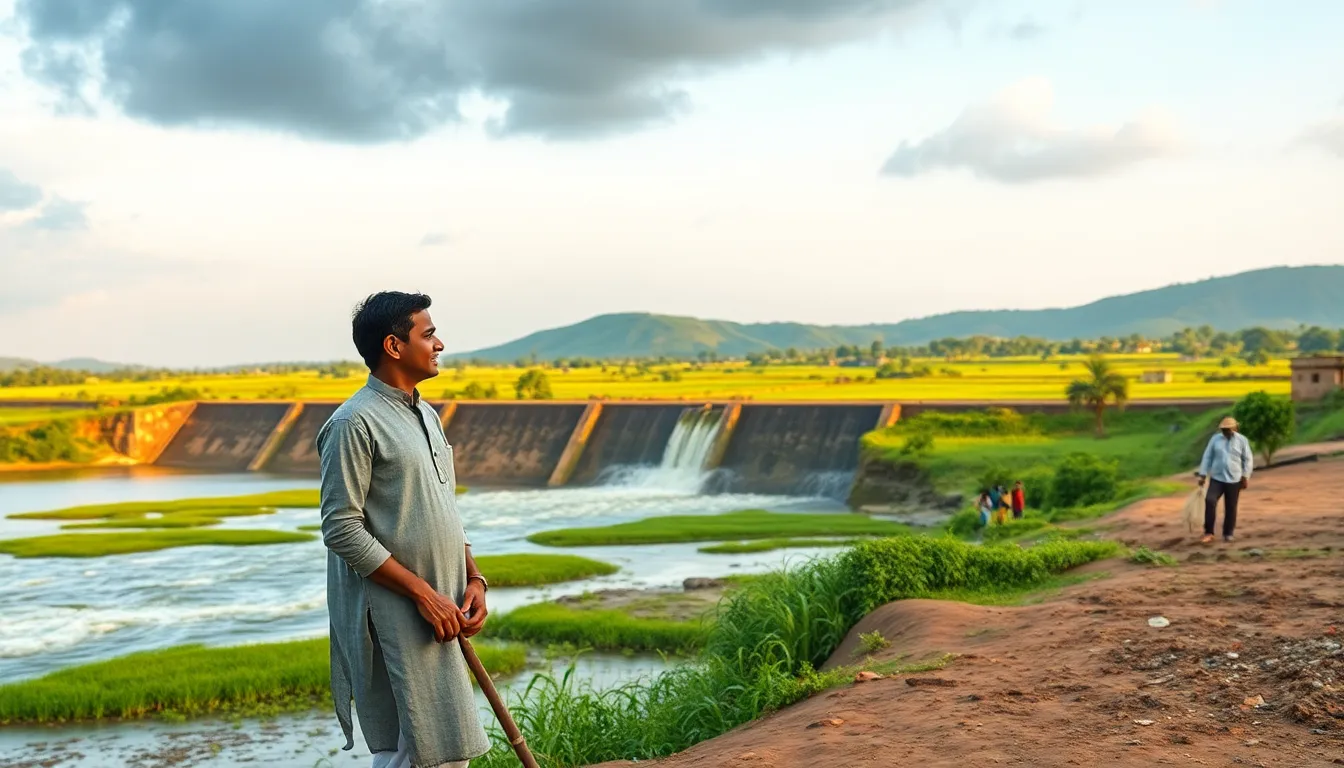Gujarat has recently experienced heavy rainfall, leading to significant changes in its water reservoirs. In just 24 hours, the state saw an average rainfall of 15.04 mm across 159 talukas. This influx of water has filled 206 dams, with 8 of them reaching full capacity. Currently, 14 dams are on high alert due to the sudden rise in water levels.
The Narmada Dam is one of the most notable, with a full capacity level of 454.98 feet and a current water level of 389.96 feet. The state is closely monitoring these reservoirs to ensure safety and manage water resources effectively.
According to the weather department, several regions have issued red alerts. Districts such as Banaskantha, Rajkot, and Porbandar have been particularly affected. Meanwhile, orange alerts are in place for areas like Kutch and Morbi, indicating the potential for heavy rainfall.
The heavy rains have brought relief to the state, which has been dealing with dry conditions. Many areas were struggling with low water levels prior to this rainfall. The recent downpour has alleviated some of these concerns, but it has also raised new challenges, such as the risk of flooding.
It is essential to manage water levels carefully. Some dams are releasing water to maintain safe levels and prevent overflow. The Sardar Sarovar Dam, which is vital for Gujarat’s water supply, has reached 86% of its total capacity, holding 2,88,248 MCM of water.
Local authorities are advising residents to stay alert. They are monitoring the situation closely and are prepared to respond if necessary. The government has also implemented various measures to improve water management in the state. Projects like the SAUNI Yojana aim to distribute water from the Narmada to areas that need it most.
Additionally, rainwater harvesting initiatives are helping to recharge groundwater. These efforts are crucial as they ensure that water resources are sustainable in the long term.
As the state continues to receive rain, the forecast suggests that heavy rainfall will persist until June 28. Residents are encouraged to stay updated with weather alerts and take necessary precautions. The recent rains have brought positive changes, but they also require careful management to ensure everyone’s safety and well-being.
In conclusion, Gujarat’s water situation has improved dramatically due to recent rainfall. While this is a positive development, vigilance is needed to manage the water levels and mitigate potential flooding risks. The state is working hard to balance immediate needs with long-term water sustainability efforts.


Leave a Reply